#National Gallery of Art Warsaw
Text

Piotr Stachiewicz (1858-1938)
"Christ's Farewell to Mary" (1900)
Oil on panel
Located in the Warsaw National Museum, Warsaw, Poland
#paintings#art#artwork#religious painting#jesus christ#piotr stachiewicz#oil on panel#oil on wood panel#warsaw national museum#museum#art gallery#polish artist#christianity#mother mary#mary and jesus#mother and son#mother and child#grief#despair#pain#goodbye#early 1900s#early 20th century
124 notes
·
View notes
Text
sculptures* round 1 poll 7


Malarstwo (Painting) by Leon Tarasewicz, 2003 (Zamek Ujazdowski in Warsaw):
propaganda (quote from the artist): "[...] marzy mi się obraz, w którym mógłbym całkowicie się zanurzyć i brodzić w cementowym kolorze, swobodnie go kształtując, by później to wszystko mogło zastygnąć." [I dream of a painting in which I could immerse myself completely and wade through the concrete colour, shaping it freely, until finally it can all set]
Zachęta National Gallery of Art Great Hall Staircase by Leon Tarasewicz, 2006:
propaganda: I just love how it takes over the space, the modern abstract colorful art in the white classical marble stairway. How it mix the colors where the stairways meet. The way the splots make me think of Jackson Pollocks Drip paintings and the modern idea of putting the process of creating art not the polished finished product more into focus, how this kind of art installation makes me as the visitor feel like part of the art, how it makes me want to create art.
47 notes
·
View notes
Photo

Aneta Grzeszykowska is a Polish Artist. Her work is included in the collections of the Guggenheim Museum, New York, the Seattle Art Museum, the Rubell Museum, Miami, the Museum of Modern Art, Warsaw and the Zachęta National Gallery of Art.
99 notes
·
View notes
Text
Stats 2: Electric Boogaloo
Our 256 works are comprised of.... 132 paintings, 36 drawings / digital artworks / comics, 26 installation pieces, 20 sculptures, 11 buildings, 11 public artworks, 10 photographs, 4 prints, 3 cave arts, 2 textile arts, and 1 thing I classified as a collage instead of anything else!
More stats below!
Most popular city: New York, with 13 pieces, followed by Paris with 8, and Chicago is third with 7! Washington DC has 6, Florence, Madrid, and London all have 5, Philadelphia has 4, Dublin, Edinburgh, Mexico City each have three, and all the following cities have two: Boston, Cairo, Calgary, Cordoba, Helsinki, Houston, Jerusalem, Los Angeles, Munich, Ottawa, Prague, Vienna, Warsaw
Most popular museum: somehow the Art Institute of Chicago has the most with 6 pieces! Followed by the Museum of Modern Art with 5 pieces! The Museo del Prado has 4, the Philadelphia Museum of Art has 3, and the Ateneum, Louvre, Metropolitan Museum of Art, Museo Dolores Olmedo, National Gallery of Canada, Solomon R. Guggenheim Museum, Tate Britain, Tretyakov Gallery, and the Uffizi Gallery each have 2! In addition, the single works are spread out amongst 16 city level galleries (ie the Phoenix Art Museum), 5 state/provincial (ie Queensland Art Gallery), 25 national (ie National Gallery Prague), 8 museums named after benefactors (ie the Hirshhorn Museum), 7 museums dedicated to a specific artist (ie the Van Gogh Museum) and numerous other institutions! Churches, palaces, increasingly specific museums, museums that are named after their location rather than their governmental level... and of course a whole lot of private collections and pieces we were unable to find the location of!
Countries! 50 pieces are in the US! 13 in France! 12 in Spain! 7 in England, 6 in Canada and Italy, 5 in Russia, 4 in Ireland, Mexico, and Australia, 3 each in Germany, Austria, and Scotland, and 2 each in China, the Netherlands, Israel, Finland, Wales, Poland, Japan, Egypt, and India, and 1 each in Portugal, Ecuador, Thailand, Singapore, Belgium, Argentina, Sweden, the Czech Republic, Norway, Bangladesh, Saudi Arabia, and the Vatican!
Demographics! I revoked John Singer Sargents American status for these because he was born in Europe, and spent most of his life travelling around Europe. I tried my best to track down the correct numbers but honestly some of these are likely to be slightly off. I went with easily publicly available information like Wikipedia and where that failed the author's website. I also tracked people's birth countries in addition to where they lived / worked for most of their lives. Anyway! We have 74 pieces by American artists! 27 French, 22 English, 14 Russian, 13 Spanish, 11 Canadian, 9 Italian, 8 Chinese, 8 German, 6 Irish, 6 Polish, 6 Mexican, 5 Greek (four of those are Ancient Greece), 5 Ukrainian, 5 Japanese, 4 Australian, 4 Belgian, 4 Indian, 3 Serbian, 3 Armenian, 3 Dutch, 3 Austria, 3 Latvian, 3 Swedish, 2 each from Finland, Scotland, Malaysia, Cuba, the Czech Republic, and Norway, and one each from Israel (specifically), Portugal, Ecuador, Thailand, Switzerland, Denmark, Iran, Colombia, Chile, Estonia, and Egypt (albeit Ancient Egypt)
Including the one Israeli artist, we have 7 Jewish artists represented, as well as 4 Black, 6 Indigenous (one is half Kichwa, one is Sami, one is Haida, one is Ojibwe, and two are Australian Aboriginals. One of those is Kokatha and Nukunu, and the other one was a group project with eight artists who did the majority of the work, and 6 of those are from Erub Island but the articles did not specify further except that at least one of the eight is non-Indigenous), 1 Chicana, and 1 Asian-American (which I am specifying because I felt very stupid adding tallies to an Asian column when I already said there are 8 Chinese artists and 5 Japanese and 2 Malaysians and....). We also do have 16 artists that publicly identify as queer in some fashion! I have listed 9 works by gay men, 2 works by lesbians, and 5 that have chosen to use "queer" instead of other labels.
And on that note.... we have 155 works by men, 51 by women, and 2 by nonbinary artists!
Most represented artists! Frida Kahlo and René Magritte tied with four works each! Félix González-Torres, Francisco Goya, John Singer Sargent each have three! And the artists that have 2 artworks each are... Claude Monet, Dragan Bibin, Edmund Blair Leighton, Francisco de Zurbarán, Gustav Klimt, Holly Warburton, Hugo Simberg, Ilya Repin, Ivan Aivazovsky, Jacques-Louis David, Jenny Holzer, Louis Wain, Pablo Picasso, Sun Yuan & Peng Yu, Victo Ngai, Vincent van Gogh, Pierre-Auguste Renoir, and Leonardo da Vinci (although the second is debated attribution)! That means that 205 of the works are not by any of the above! Some have unknown artists (we've got THREE CAVE ARTS) but most are just... really varied!
And lastly, years painted (as sorted by year finished and not year started). Who else loves when something is listed as "13th century"?? Not me, that's who. This is going to be a lot of numbers, and there's no real way to make it more readable. so..... feel free to skip!
The oldest two submissions are from circa 40,000 years before present, and 30 to 32 thousand years before present! Six more artworks came to exist before 0 (CE or AD depending on who you're talking to), and 7 before 1000! 2 from the 1200s, 6 from the 1400s, 8 from the 1500s, 3 from the 1600s, and 5 from the 1700s! Several of those already listed were started in a previous ....age category (for instance, one has no specified date other than 7300 BC to 700 AD) but once we hit 1600, everything is usually finished in a relatively short timespan. 6 are from 1800-1850, 9 from 1850-1880, and the 1880s are extremely busy. 1 from 1881, 3 from 1882, 1 from 1883-1885, 5 from 1886, and two each from the next four years (1887-1890)! 6 from 1891-1895, and 5 from 1896-1900!
We've got 3 from 1901 or 1902, 4 from 1903, two each from 1906 and 1907, and one each from 1908 and 1909! 3 from 1910-1915, 3 from 1917, 2 from 1918 and one from 1919! 6 are from the Roaring Twenties, three of them specifically from 1928! 4 from 1931-1935, and only 3 from the latter half of the 30s! There's 3 from WWII, and 4 from 1946-1949, 5 from 1951-1954 but only 3 from '55-'59. 5 from the sixties, 7 spread out through the 70s, and 10 from the 80s, two each from 81, 82 and 84. The 90s have a lot of duplicate and triplicate years, totaling 20 overall! 11 are from 90-95, the other 9 are 96-99. 7 from 2001-2005, and 8 from 2006-2009. 9 from 2010-2014, 3 from 2015, 6 from 2016, 5 from 2017, 1 from 2018, 3 from 2019, 5 from 2020, 1 from 2021, 4 from 2022, 11 from 2023, and 3 ongoing projects! Whew! If anyone wants it listed By Year instead of in groups like this, that'll be most readable in like... list form and that's way too long for a stats post.
Congrats on making it to the end! If you got this far, uh, let me know if you want to see the spreadsheet after the tournament, I guess. I'm very proud of it.
50 notes
·
View notes
Text
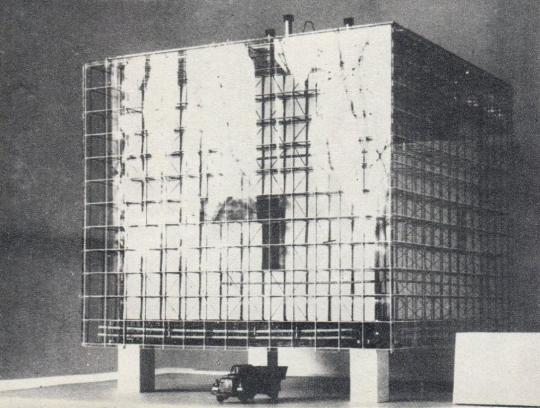


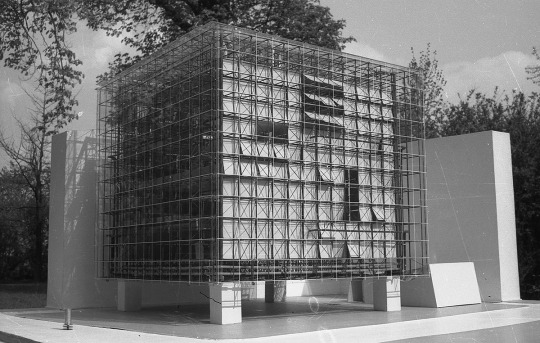
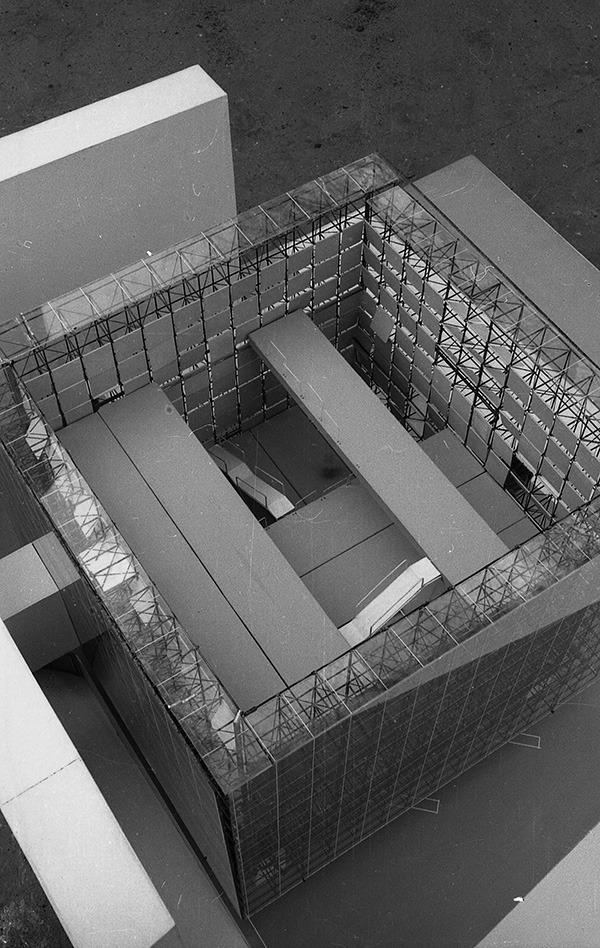
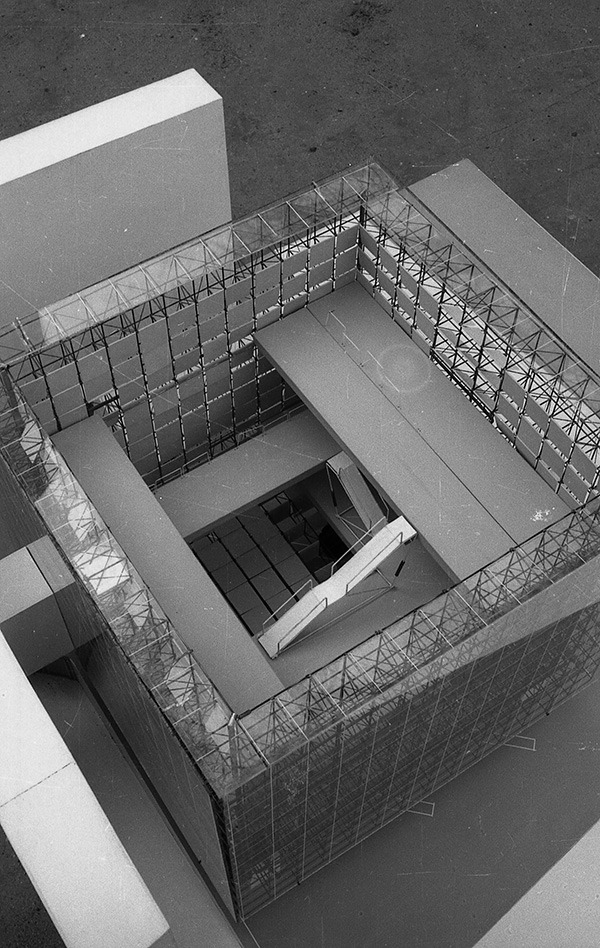


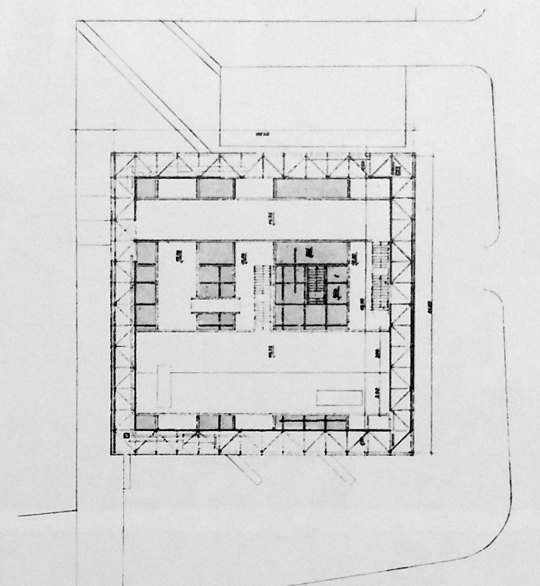
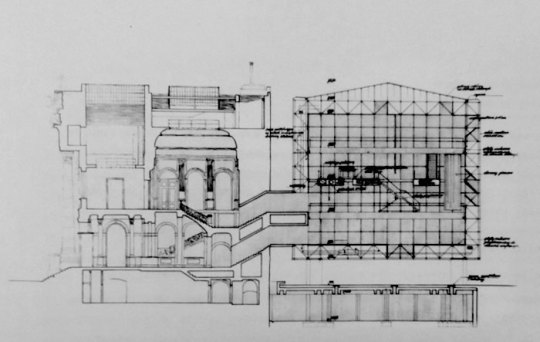
Expansion of the Zachęta national gallery of art
Warsaw, Poland
1958
Oskar Hansen (1922–2005)
#warsaw#poland#europe#1950s#20th century#architecture#oskar hansen#exhibition#building on the built#order and disorder#temporary architecture
8 notes
·
View notes
Text
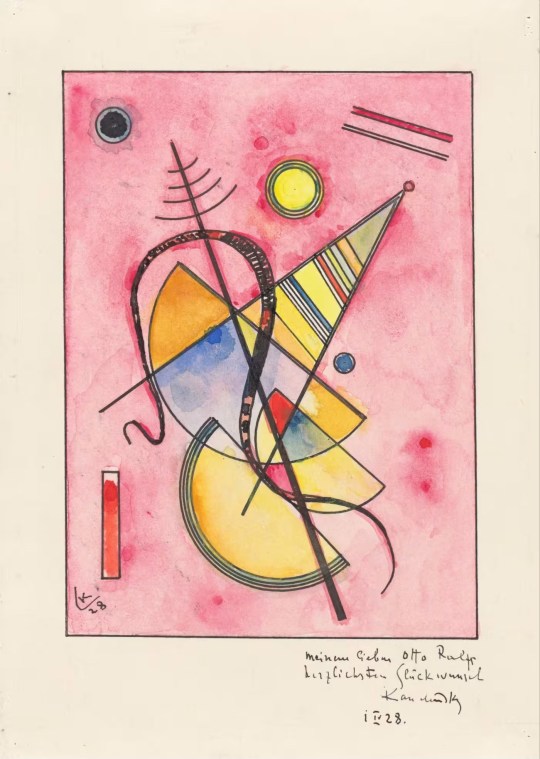
Wassily Kandinsky, ‘Untitled’ (1928) :: [Robert Scott Horton]
* * * *
Imogen Savage: Housed in a 19th-century listed mansion that stretches skyward into spires, the Grisebach auction house gives off the disquieting charm of a German fairytale castle. Outside runs Fasanenstrasse, a leafy street of galleries and skincare boutiques in one of Berlin’s chicest corners. On December 1 2022, Marcin Król, the Polish consul in Berlin, climbed the steps to the building for the evening sale beginning at 6pm. A number of impressive modern artworks were on offer, including a sought-after self-portrait in oil by Max Beckmann. But it was Lot No 31, “Untitled”, a little pink Wassily Kandinsky watercolour from 1928, that had Król’s attention that evening. Król was not at Grisebach as a buyer. Earlier that day he had sent the auction house a message demanding it stop the sale of the Kandinsky. In the hours since, representatives at Grisebach had reviewed the legal status of the artwork and its right to be sold by Inga Maren Otto, a German billionaire and philanthropist. Their decision was clear. They would proceed. At 4.40pm, Król took to Twitter, quoting the message he’d sent to Grisebach. “Withdraw[ing] the painting from the auction,” he wrote, “[was] the only correct and moral action in this situation . . . The provenance/history of the painting stated [in the catalogue] is clear . . . the painting has ownership markings indicating its origin from the National Museum in Warsaw. [It has been registered] from the Polish side in Interpol’s database of stolen works of art.” He finished the thread with an update: “The auction house has not yet stopped selling the work. As of 4.50pm.”
Król watched on a TV screen in the corner of an anteroom as the auction began. Lot No 31 eventually appeared on the screen. Flattened by the glowing pixels, the original aqueous colours took on neon tones. There was a faint scribble underneath in Kandinsky’s handwriting. After a flurry of bids, more than doubling the upper reserve price, the hammer came down. Afterwards, Król posted a photo to Twitter with a solemn summary of what he had witnessed. It read like both the beginning and the end of an art-crime story: “Grisebach sold Kandinsky’s watercolour [“Untitled”] for €310,000. The painting was stolen in 1984 from the National Museum in Warsaw.” Then the Berlin police showed up at the auction house, in response to a report of a stolen artwork being sold on the premises. Król’s message that day was, said Grisebach in a statement issued after the event, the first they’d learnt of the theft.
I heard about the auction of the Kandinsky watercolour some weeks later. I was intrigued by this little work on paper, the size of which is hard to gauge when viewed online. A cluster of geometric shapes and coloured washes not much bigger than a postcard, it’s not a famous piece and was never supposed to be. The personalised dedication at the bottom provides a clue as to its original, more intimate context. Through Król’s media offensive, I began to imagine the painting in its previous lives. A valued artwork can do this; move through history like a time traveller who has seen it all, changing hands, changing walls, changing in value, picking up a few marks and scuffs, but remaining, on the surface, itself. It’s easy to forget that many of the works of art we see today have somehow weathered revolutions, wars and genocide. During and after the second world war, art collections dispersed like breadcrumbs in the mouths of sparrows. Since that time, art dealers and auction houses have continued to sell these works, right up to the present day, with values soaring.
As I began to trace the Kandinsky’s journey, I discovered the story had deeper roots than even Król had imagined. The watercolour wasn’t stolen once but twice. Having survived the Nazi party’s confiscations of modern art in the 1930s, it languished in a depot in occupied Poland before travelling back and forth across the world via private and public sales as the lines between black market and art market blurred postwar. As the trail grew more convoluted, my questions multiplied. How was it possible, I wondered, that a piece of art that we know was once stolen from a major European museum could now be sold, perfectly legally, by an important German auction house? And who, in the chain of ownership spanning nearly a century, is the rightful owner of Lot No 31? In his Dessau studio in 1928, Wassily Kandinsky sat before a small sheet of thick paper. He drew in ink, a balance of precisely placed interlocking semicircles, triangles and floating circles, with a more irregular snakelike mark through the centre. Then he dragged his paintbrush across some watercolour pans, applying the colours to the interior of the shapes in blues, yellows and reds, and washing the surround in pink. The watery paint pooled in different areas, variegating the intensity of the colour where it settled. Then it dried, locking the painting into position. At the bottom, in pencil, the artist wrote: “Meinem lieben Otto Ralfs, herzlichsten Glückwunsch, Kandinsky I IV 28” [“To my dear Otto Ralfs, Happy Birthday, Kandinsky, 1 April 28”]. It was a gift, made for his friend and patron on the occasion of his 36th birthday. Kandinsky’s studio was in a row of identical semi-detached houses located in a pine forest at the edge of town, where artist-professors lived and worked. This was the vision of Walter Gropius, founder of the influential modernist art and design school the Bauhaus, who designed the Dessau “Masters’ Houses” in 1925 to fit his concept of gesamtkunstwerk, or total artwork. Kandinsky lived at No 6, next door to the Swiss-German artist Paul Klee. The day I visited earlier this summer, the sunny weather was heating the pines, filling the air with the same calm, sweet smell that Kandinsky, then in his late fifties, and the younger Klee would have breathed as they sat drinking tea together in the garden.
Inside, the thick, shiny paint was fresh from recent restoration work, distracting the senses from conjuring their presence. The artists’ studios, the largest rooms in their carefully designed houses, shared a wall. From the front, an enormous horizontal window frames the central focus of the house, the parallel studios in which they worked, taught and held salons: Kandinsky on the left, Klee on the right. Otto Ralfs and his wife Käte bought their first works by Klee when they visited the Bauhaus in Weimar in September 1923. After that, their lives changed completely. The couple didn’t have a lot of money. He worked as an insurance salesman and owned a shop in his hometown, Braunschweig, in northern Germany. She was a paediatric nurse. But they were among the first people to see the value in the art being produced at the Bauhaus. At one point, they had the largest collection of Klees, and the second-largest collection of Kandinskys after Solomon R Guggenheim.
[Financial Times]
8 notes
·
View notes
Text



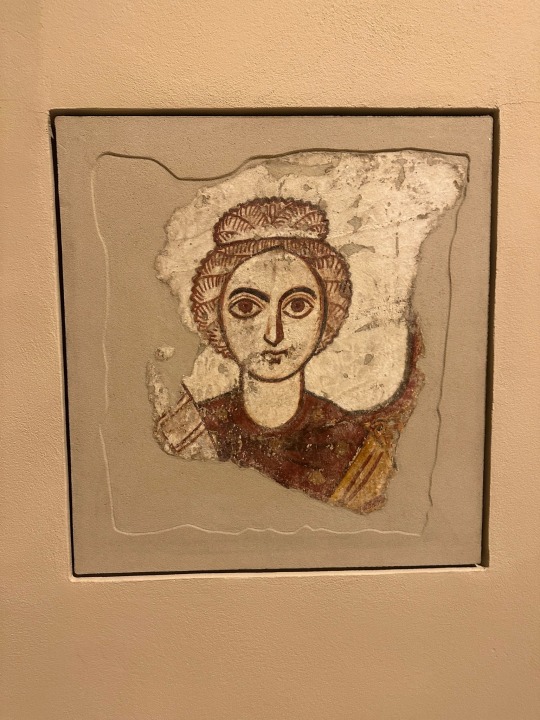


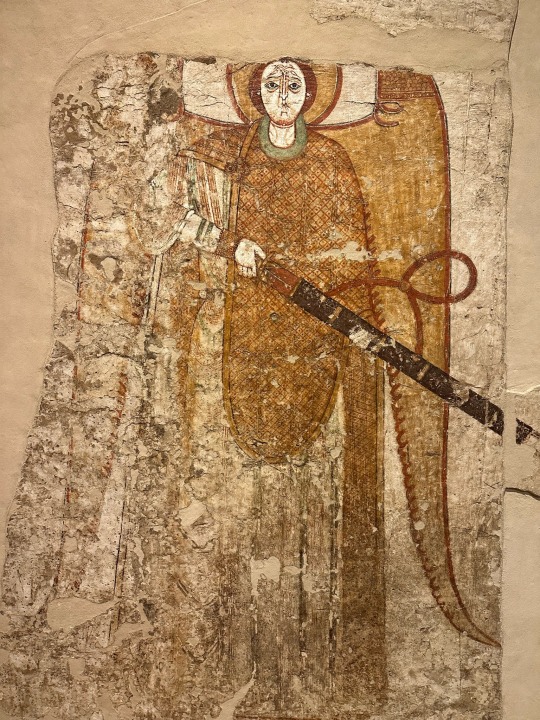

One of my favourite places - the Faras Gallery.
„Faras (formerly Ancient Greek: Παχώρας, Pakhôras; Latin: Pachoras; Old Nubian: Ⲡⲁⲭⲱⲣⲁⲥ, Pakhoras) was a major city in Lower Nubia. The site of the city, on the border between modern Egypt and Sudan at Wadi Halfa Salient, was flooded by Lake Nasser in the 1960s and is now permanently underwater. Before this flooding, extensive archaeological work was conducted by a Polish archaeological team led by professor Kazimierz Michałowski.”
„The cathedral was founded by bishop Aetios in 620 and then twice rebuilt: by Paulos at the beginning of the 8th century and Petros I at the end of the 10th century. The subsequent buildings were called after these bishops. The cathedral had been completely filled with sand thanks to which its structure and decoration were well preserved. These paintings are the best surviving examples of Christian Nubian art and depict portraits of archangels, mainly Michael, various monarchs and bishops of Faras, Christian saints, Virgin Mary and a number of Biblical scenes. They were executed in tempera on dry plaster, on several layers dated from the 8th to the 14th century. Of the 169 uncovered paintings, 120 were taken down from the walls. Sixty-six of them were transported to Poland and are today on display in the Polish National Museum in Warsaw, and in Sudan National Museum in Khartoum. In addition, a major pottery workshop was found.
Thanks to the discovery of the List of Bishops of Faras, it was possible to date each episcopate and thus to establish the date of some of the wall paintings.
In the turbulent later years of Christian Nubia, Faras seems to have declined and the administrative centre moved to the more easily defended area of Qasr Ibrim.”
(From wikipedia: https://en.wikipedia.org/wiki/Faras)
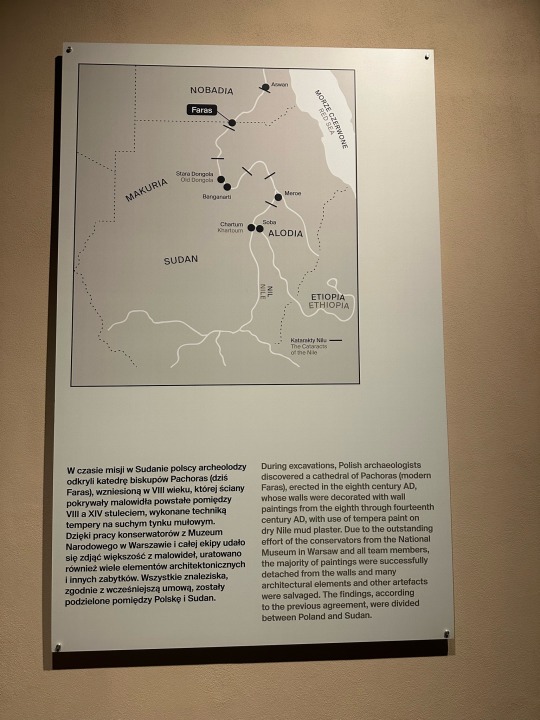

13 notes
·
View notes
Text

MWW Artwork of the Day (4/18/24)
Marinus Claeszon van Reymerswaele (Flemish, 1495-1567)
Two Tax Collectors (c. 1540-50)
Oil on panel, 82 x 56 cm.
National Museum, Warsaw
There are about thirty versions of the "Tax Gatherers" (the best is in London, National Gallery; another has the date 1552), and what nobody has so far explained is why so many people should want to own a picture of tax collectors (and excessively ugly ones at that) gloating over their imposts. Little is known about the painter except that he worked in the Spanish Netherlands (Flanders), that his works were not many, and that he limited himself to themes better-known through his more productive contemporary, Quentin Metsys. The Prado in Madrid, where one can view this canvas, is the best place to visit if you're interested in the Flemish art of this period.
5 notes
·
View notes
Note
hi kasia! I know you’re very busy with the apartment remodeling (I hope that’s going well!! Or not awful at least) but I was wondering if you had any recommendations for places to visit in Poland? I’m visiting one of my friends in Krakow but I’ll have a few extra days to myself so I wanted to see if you had any recs :) thank you!
hi anon! i hope this isn't too late 🏃🏻♂️🙈 i apologise for not having had the time to respond earlier!!! unfortch i AM very busy these days ):
but ANYWAY. if it's just a few days, i'd recommend sticking to Kraków or taking a train ride to either the mountains (Zakopane, for example, which is super touristsy, but probably also the easiest to navigate as a foreigner) or Warsaw. keep in mind though (bc idk when you'll be here) that October 31 and November the 1st and then November the 11th are public holidays in Poland (the first two religious, and the latter is Independence Day, def avoid Warsaw around then) and the trains and roads will be super crowded.
i'm only going to stick to Kraków i apologise but i'm sure your friend is gonna help out a lot with recs as well! and Warsaw most certainly has a great web presence for touristsy spots, but if you need me to at list some bigger museums or etc. at least, let me know. LASTLY, i'm about to copy paste recs i gave to another mutual a few months back, so - Steph, if you're seeing this, i hope you don't mind! 🩷
first things first, jakdojade.pl (either the app version, or just www.jakdojade.pl opened via the browser app) is a super handy website that shows you how to get from point A to point B, which buses/tram lines to take, etc. there are some major road renovations taking place right now around the Most Dębnicki area (near the Wawel castle), so please keep that in mind! not sure about the tram lines around the Main Train Station as well. 🤔 i think there were plans to renovate the Lubicz line, but i don't remember when. :(
Kraków is great for sightseeing, because it's quite densely built, so you can see a lot of landmarks just by walking around on foot in the Old City area! the Old City is situated like 7 mins from the main train station. in the Main Square area, the Mariacki church with an altar of a famous polish artist Wit Stwosz is definitely worth seeing, as well as Sukiennice (the building right in the center of the Square) with its underground museum.
near the Main Square, there's a gallery of modern art called Bunkier Sztuki, address: Rynek Główny (Main Square) 20, 31-008 Kraków. i haven't been there in a few years so i'm actually not sure what the current exhibits in there are and if they're worth seeing, but hopefully they are!
there's Muzeum Książąt Czartoryskich on św. Jana street 19, 31-017 Kraków which used to host Da Vinci's The Lady with an Ermine, but i think it's currently on loan for some museum in Warsaw? it was actually transferred to the National Museum of/in Kraków earlier this year, but google is being confusing, so i'm not sure if it's currently there or in warsaw 🤔 the National Museum is another place you might potentially want to visit: Muzeum Narodowe w Krakowie, al. 3 Maja 1 street.
there's obviously the Wawel Castle, the historic residence of Polish kings, as Kraków used to be Poland's capital before Warsaw. i haven't been inside in years, but it's probably still worth it! and even if you don't wanna/decide to go inside, you might want to just stroll around the castle grounds. Wawel is right in the city centre as well, so it's another one of those Kraków's staples you can go to by foot!
around the Main Square, there are several "famous" streets with quirky cafes and shops you can visit. and even if you don't go inside, you can just stroll down those streets to get a feel of the city. for example the Floriańska street, Grodzka street, saint Jan or saint Tomasz streets, the Bracka street. no matter which one of these you decide to take from the Main Square, you'll be getting that Kraków experience :)
then there's the historic Jewish district of Kraków called Kazimierz. on one hand, packed with difficult history, on the other, it's become the most hip part of the city! again, loads of famous cafes, pubs, and shops are situated there, some festivals take place there, and so on. you can just stroll around the district, and then visit the Mocak gallery of contemporary art, for example! https://en.mocak.pl/ , address 4 Lipowa St 30-702 Kraków.
just like with Bunkier Sztuki, i haven't seen the current exhibits there, so idk if they're any good, but i personally like Mocak, and you might like it as well! it's at the edge of the Kazimierz district, and the Kazimierz district is right next to the Old City district. you can go from Old City to Kazimierz on foot or take a few quick tram stops.
https://duze-podroze.pl/krakow-kazimierz/
this site is in Polish, but you can take a look at the bolded names and pics - it's a handy guide re: what to look for when you're strolling around in Kazimierz. there are jewish cemeteries, synagogues, the Boże Ciało church, the Wolnica square with Muzeum Etnograficzne (etnographic museum) on it... (https://etnomuzeum.eu/ , the site has an english version that i can't link to directly for some reason). loads of places to see even if you want to just look at them from an outside, you know?
some other places potentially worth checking out: Jagiellonian University's botanical gardens, address Mikołaja Kopernika 27, 31-501 Kraków.
then there are three locations of the Museum of photography in Kraków BUT i'm gonna come clean and admit i still haven't visited any ajdjd 🏃🏻♂️ so idk if they're any good, and also they don't seem to have english versions of their websites? unless my phone is failing me. but street addresses are: Rakowicka 22A, Józefitów 16, Królowej Jadwigi 220.
tl;dr sticking to Kraków is a great idea for a short stay, because you can concentrate on only two districts (Old City/Main Square + Kazimierz), and there'll be PLENTY to see, and you can reach those places by foot or via short tram rides! if you're thinking about taking some trips in the Małopolskie voivodeship where Kraków is situated, there's the historic Wieliczka saltmine which is pretty famous: https://www.wieliczka-saltmine.com/ but you'd need winter clothes for that underground trip. you can reach Wieliczka by regular city buses, which is great.
then there's obviously Oświęcim known as Auschwitz-Birkenau, but that one would be heavy, and it'd take probably at least a half of your day: https://www.auschwitz.org/en/visiting/ as it's further from Kraków than Wieliczka.
please remember that the opening hours tend to be 9 am - 6 pm in most places, sometimes even shorter one day a week (sunday or monday or tuesday, typically), or some of them might be closed one day a week. so always remember to check them beforehand! it's also always worth checking if any place has any dedicated day where they offer a free pass or a discount too, you should find that info on their websites.
some places to eat in you might want to check out, although again, i'm sure your friend will be helping out with these as well: Zapiekanki in okrąglak (legendary, mandatory spot!), Nolio, Hamsa, Akita Ramen, Boccanera ristorante pizzeria, trattoria la campania, ima sushi, Sushi Royal, Viale Verde, Restaurant Martello, Sushi 77, Restauracja Bianka, Chinkalnia Restauracja Gruzinska, Hospudka u Nas
aaand that's all from me, sorry i didn't have the time for more! 🩷 HOPE U ENJOY YOUR STAY!!!!!!!!
#can someone PLEASE remind me how to make a cut on mobile rip i promise i'll hide this wall of text#also TY anon for asking about remodelling it's so sweet ❣️🥹#it actually hasn't started yet the plan is to begin in about 2-3 weeks but yeah this year has been fucking Exhausting to me#haven't even gone on vacation this year and most of my weekends and free days have been dedicated to that flat and all the fucking paperwork#related with having inherited it and applying for a mortgage to renovate it and Many More#in short: Hell#but ANYWAY enough of that. hope you enjoy your stay!!! sorry this couldn't be longer or more detailed!#kraków#long post#anonymous#a response
9 notes
·
View notes
Text

Bogna Burska (born 1974) is a Polish playwright and visual artist known for installations, spatial photography and video. Her art is presented from a feminist perspective. Her initial painting compositions were narratives of congealed blood forms made with red paints applied by fingers on the walls, canvas and glass. Via Wikipedia

"Droga" from the permanent collection of Zachęta National Gallery of Art (Warsaw, Poland)
3 notes
·
View notes
Note
mar!!!! how about sage and chia for the ask game?
kendy!!!! hello gorgeous!!! ask and u shall receive
sage ⇢ what ‘medium’ of art (poetry, music, fiction, paintings, statues etc.) is the most touching to you? why do you think that is?
ohhhhhh this is HARD. I'm a big art BITCH. I think paintings, particularly "classic" paintings will always have a special place in my heart bc that's kind of what I fell in love with first of all. like I genuinely remember the first time I saw a turner painting in the flesh at the national gallery and it was A Moment. equally seeing a rembrandt in warsaw felt really special, and walking through the louvre was one of the single most amazing experiences of my life. that being said!!!! writing has informed a huge part of my life and there are pieces of writing that have really touched my soul in a way that no other medium has
chia ⇢ what’s an inside joke you have with someone else?
god I love inside jokes but istg explaining them is EMBARASSING LMAO me and mr marley have one that's so dumb but it dates back to when we first got together and he was telling me about how he used to do shadow puppets when he was a kid (icr how we got on to the topic of conversation) and for some reason he used to just hold a clenched fist to the light and the shadow was supposed to be george washington. I don't know how. so now every time we see our shadow one of us holds a fist out and we both say george washington. it's so fucking STEWPID 😭😭
get to know me!
5 notes
·
View notes
Text
paintings* round 1 poll 82
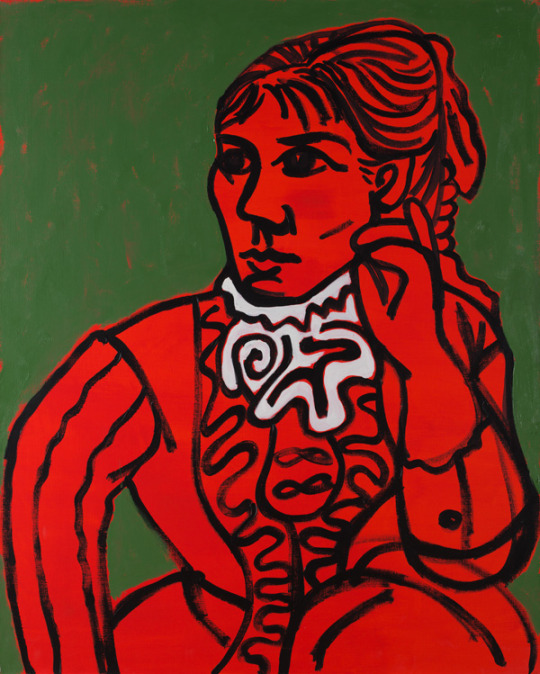

about the artist: Since 2005 he is publisher and editor-in-chief of DIK Fagazine, and has founded the Queer Archives Institute in 2015
Maria Konopnicka (from the series "Poczet"), 2017:
propaganda: I will just quote some text from the curatorial text by Fanny Hauser and Viktor Neumann accompanying the "Poczet" exhibition at Kunst(Zeug)Haus, Rapperswil, Switzerland (23 August - 1 November 2020), because they talk about it better than I could:
"The Polish word “poczet” once referred to the smallest unit of the army of Polish-Lithuanian Commonwealth (1569-1795), and later came to describe a group of people of common descent or performing a specific role. Most importantly, the word relates to a series of portraits of Polish kings and queens (since 966 to 1795), arranged chronologically and conceived as pictorial representation of Polish history [...]. [...]
The artist’s employment of portraiture, traditionally considered a bourgeois genre, constitutes a crucial part of his practice as a means to paraphrase and inquire the aesthetics of a variety of historic artistic movements and practices. Adding another perspective to the common visual codes and historical narratives, this contextual shift becomes a subversive strategy to challenge dominant modes of representation and commemorates those who have been subjected to the patrilinear logic of history.
Radziszewski’s "Poczet" is a bold retake on the idea of the formation of national identity as demonstrated by pictures that testify to (or rather construct) the continuity of royal power, exercised by heterosexual, cisgendered males and perpetuated through royal marriages. Forming a gallery of twenty-two ancestral portraits of non-heteronormative Polish figures of the past millennium from fields including politics, science, literature and art, "Poczet" deliberately reaffirms the protagonists’ expression of queerness that has been suppressed or erased from their historiography to a large extent."
The series "Ali", 2015-2017:
propaganda: Taken inspiration from Picasso in terms of style (specially like the nod to Guernica), to pay homage to the real life figure Agbola O’Brown (pseudonym “Ali”), a Nigerian-born jazz musician and the sole black combatant of the Warsaw Uprising, right wing assholes like to definine who and who not belongs, so this work really speaks to me as a counter work.
38 notes
·
View notes
Photo
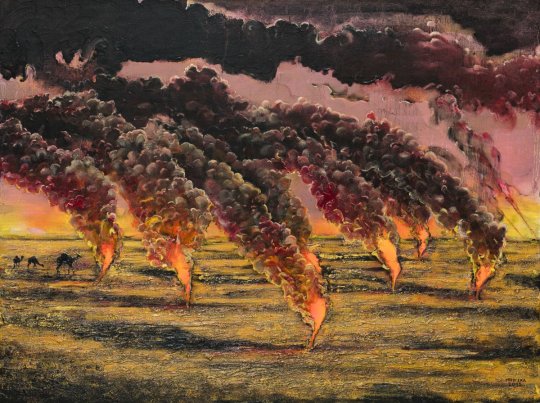




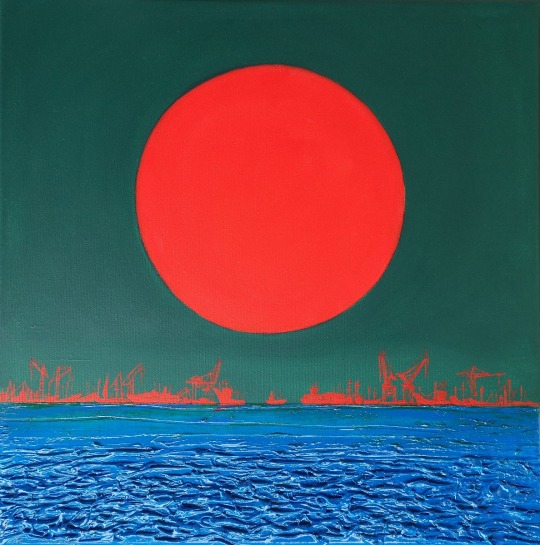



Michał Mroczka, Polish, born in 1984.
Michał graduated from Painting at the Faculty of Arts in Lubin. Since 2007, he has been co-creating the Independent Academy of Frenetics group. In 2010, he was a co-founder of the autonomous Lublin gallery Kamienica Cudów. He belongs to the Pracownia Otwarta Association in Lublin.
He is a co-creator of the model of the downtown of pre-war Warsaw in the Kamienica Theatre. Winner of the Golden Leaf Retro Special Award of the Minister of Culture and National Heritage. Finalist of the Grand Prix of the Foundation for Franciszka Eibisch 2015. Finalist of the Konfrontacje Sztuki 2016 competition of the Mazovian Institute of Culture and the 3rd National Painting Competition named after L.Wyczółkowski, BWA, Bydgoszcz
https://www.instagram.com/michal_mroczka/
https://www.facebook.com/Michał-Mroczka-Malarstwo-2054964141389998/?modal=admin_todo_tour
http://warsawoffart.pl/2019/08/30/16-michal-mroczka/
13 notes
·
View notes
Text

Zernova Ekaterina Sergeevna (1900-1995). The driver is driving. India. 1957. cardboard, oil, 20x27.5 cm.
Honored Artist of the RSFSR (1974). One of the brightest representatives of OST.
Monumentalist - worked with A. Deyneka and Yu. Pimenov for the 1938 World's Fair in Paris. Since the 60s, she headed the section of monumentalists of the Union of Artists of the USSR, became one of the ideologists and "legislators of style" of Soviet monumental art.
In 1917 she graduated from the art studio of F. Rerberg. In 1919-24 she studied at the State Free Art Workshops with I. Mashkov, and then with A. Shevchenko and D. Sterenberg. In 1925 she participated in the first exhibition of OST. In 1928-31 he was an active member of this society. She worked as an illustrator and book designer, made posters. After the split, OST joined the "Image" - a society that united adherents of "production topics". In 1929-33 she participated in exhibitions of the All-Union Society for Cultural Relations with Abroad (VOKS).
In 1936, the first personal exhibition of Grain was held in Moscow. In the post-war years, she worked in theater and cinema (together with Yu. Pimenov), taught at the Moscow Textile Institute. Since the late 1950s, she has worked as a monumental artist (painting and mosaic panels for the exhibition hall in Yalta, the chemical plant in Salavat, the Institute of Oceanology and the Museum of Anthropology in Moscow, etc.).
The works are in the State Tretyakov Gallery, the Museum of Contemporary History of Russia (Moscow), the Astrakhan Art Gallery named after B. Kustodiev, Museum of Art of Karakalpakia named after I. Savitsky (Nukus, Uzbekistan), the National Museum in Warsaw (Poland), as well as in private collections of Reynold Johnson and Matthew Bone.
Kardashidi and Art-Souz
11 notes
·
View notes
Text
10 of my favourite works of art
I had an idea to make a list of my all time favourite works of art, well, but only including works from 20th century and later, or the list would get too long and convoluted.
Making a cut for those who dislike long posts.

Ophelia, John Everett Millais (1851–52). In the collection of Tate Britain, London.

Almond Blossoms, Vincent van Gogh (1890). In the collection of the Van Gogh Museum, Amsterdam.

Portrait of the Countess Malacrida, Ettore Tito (1926). In the collection of the Galleria Internazionale d’Arte Moderna at Museo di Ca' Pesaro, Venice.

a poster for Moravian Teachers Choir, Alphonse Mucha (1911). In the collection of the Mucha Museum, Prague.

Shadow Decoration, Charles Courtney Curran (1887). In the collection of The Frances Lehman Loeb Art Center, Poughkeepsie NY.

The Spider, Nikolaos Gyzis (1884). In the collection of the National Gallery, Athens.

A Mountain Climber, Jens Ferdinand Willumsen (1912). In the collection of the National Gallery of Denmark, Copenhagen.

Patridges in the snow, Józef Chełmoński (1891). In the collection of of the National Museum, Warsaw.

A Concert by Bériot, Zofia Stryjeńska (1923). In the collection of the National Museum, Warsaw.

Ophelia, Jean-Baptiste Bertrand (1871). Probably in a private collection now.
It was cool to finally collect them in one place, helped me to reach some conclusions. Firstly, you’ll mostly find impressionism and art noveau pieces here, 19th and 20th century art appeals to me the most. Most of these feature women. I really like the motif of Ophelia, popular with the Pre-Raphaelites. And lots of nature: plants, flowers, animals.
Feel free to share your favourite artworks with me!
2 notes
·
View notes
Text
Олена Курзель учасниця резиденції Вибачте Номерів Немає у лютому-квітні 2024 року
Народилася в м. Южноукраїнськ Миколаївської області в 2000 р.
З 2012 по 2019 р вчилась у Державній художній середній школі ім. Т.Шевченка, факультет живопису, Київ, Україна. У 2023-му закінчила Національну академію образотворчого мистецтва і архітектури за спеціальністю “станковий живопис”.
На сьогодні живе та працює в Києві.
Працює з живописом, вишивкою, дрібною пластикою, відео, фото, інсталяцією.
Центральні теми її творчості обертаються навколо понять забуття, самотності, самоідентифікації та реконструкції забутих образів.
Брала участь у проєктах: ”До чого сниться вода?”, Асортиментна кімната, Івано-Франківськ, Україна, 2023; ”Периферія спокою”, Галерея DIM, Варшава, Польша, 2023; ”Індивідуальна мінливість”, Інститут проблем сучасного мистецтва, Київ, Україна, 2023; ”Коли бурі виявляють тишу” як частина проєкту Her gaze, онлайн лабораторії, за підтримки Програми Східного партнерства Федерального міністерства закордонних справ Німеччини, Галерея Kunstquartier Bethanien, Берлін, Німеччина, 2023; ”Merging the versions: unveiling traces”, Відень, Австрія, 2023; ”Між тобою та нами:спроба перекладу”, Хемніц, Німеччина, 2023; ”Форми присутності”, Мистецький Арсенал, Київ, Україна, 2023; ”Що можна втратити, що можна зберегти”, в рамках фестивалю “Поруч”, Одеса, Україна, 2023; ”Stay” в рамках проекту “NULLA”, за підтримки галереї Rhizom, Грац, Австрія, 2023; «Простір довкола, простір у мені», галерея Аукціонного дому «Корнерс», Київ, 2021.
Резиденцію Вибачте Номерів Немає підтримано в рамках програми (re)connection UA 2023/24, що реалізується ГО “Музей сучасного мистецтва” та Ukrainian Emergency Art Fund (UEAF) у партнерстві з UNESCO і фінансується через Надзвичайний фонд спадщини UNESCO.
Програма (re)connection UA 2023/24 спрямована на відновлення зв’язків між митцями та їх аудиторіями, підтримку художників/иць як áкторів у збереженні культурної ідентичності України, втілення нових підходів до культури пам’яті, посилення стійкості та адаптивності інституцій, громад, митців до викликів воєнного часу.
(eng)
Olena Kurzel participant of the residence Sorry No Rooms Available in February-April 2024
She was born in Yuzhnoukrainsk, Mykolaiv region, Ukraine in 2000.
From 2012 to 2019, she studied at the State art secondary school named after T. Shevchenko, faculty of painting, Kyiv, Ukraine. In 2023, she graduated in the National Academy of Fine Arts and Architecture, majoring in easel painting.
Today she lives and works in Kyiv.
Olena works with painting, embroidery, small plastic, video, photo, installation.
The central themes of her work revolve around the concepts of forgetting, loneliness, self-identification and the reconstruction of forgotten images.
Participated in the projects: “Why does water dream?”, Asortymentna kimnata, Ivano-Frankivsk, Ukraine, 2023; “Periphery of Peace”, DIM Gallery, Warsaw, Poland, 2023; “Individual Variability”, Institute of Problems of Contemporary Art, Kyiv, Ukraine, 2023; “When storms find silence” as part of the project Her gaze, an online laboratory, supported by the Eastern Partnership Program of the Federal Ministry of Foreign Affairs of Germany, Gallery Kunstquartier Bethanien, Berlin, Germany, 2023; “Merging the versions: unveiling traces”, Vienna, Austria, 2023; “Between you and us: an attempt at translation”, Chemnitz, Germany, 2023; “Forms of presence”, Mystetskyi Arsenal, Kyiv, Ukraine, 2023; “What can be lost, what can be saved”, as part of the “Nearby” festival, Odesa, Ukraine, 2023; “Stay” as part of the “NULLA” project, with the support of the Rhizom gallery, Graz, Austria, 2023; “Space around, space in me”, gallery of the “Korners” Auction House, Kyiv, 2021.
Sorry No Rooms Available Residence is supported as part of the (re)connection UA 2023/24 program, implemented by the NGO “Museum of Contemporary Art” and the Ukrainian Emergency Art Fund (UEAF) in partnership with UNESCO and financed through the UNESCO Emergency Heritage Fund.
The (re)connection UA 2023/24 program is aimed at restoring ties between artists and their audiences, supporting artists as actors in preserving the cultural identity of Ukraine, implementing new approaches to the culture of memory, strengthening the stability and adaptability of institutions, communities, artists to the challenges of wartime.
#reconnectionua

0 notes